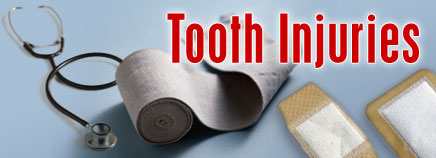
Contents
Dental
Injuries to the mouth and/or teeth can result from a fall on the face or a direct blow, such as a punch.
A blow under the jaw can result in bitten lips or tongue. Such injuries can be associated with severe bleeding, which can be a risk to the patient’s airway. If a tooth is knocked out in a collision or fall, the correct first aid may save the tooth.
Swelling in or around the mouth can be associated with an injury or severe allergic reaction. This can cause obstruction to the throat and upper airway for which prompt medical assessment and treatment are required.
Symptoms and signs – Not all may be present
- bleeding from the mouth, lips, tongue or tooth socket
- pain around or in the mouth following an injury
- a broken or displaced tooth
- swelling in the mouth or around the jaw
How you can help
1. Assess the patient and the injury
- Check that the patient’s airway is clear. If there is any risk of blood going down the throat or of increased swelling of the mouth, tongue or throat, turn the patient on the side in a supported position.
- If the bleeding is only slow or moderate and there appears to be no breathing difficulty, assist the patient into the position of greatest comfort – generally sitting or half-sitting – and check the site of any bleeding.
2. Control any bleeding
- Apply firm pressure to any bleeding wound or tooth socket. Fold a sterile dressing or clean tissue into a pad and ask the patient to hold it firmly on the bleeding site for at least 10 minutes.
- If the bleeding is coming from a cut lip, advise the patient to hold the injured area firmly between the folds of a moist tissue or dressing.

If a tooth has been knocked out:
- Handle the displaced tooth by the crown and not the root.
- Ask the patient to suck it clean and then try to replace the tooth in the original position in the socket to keep the root alive. A small piece of folded aluminium foil may be used as a splint to fix the tooth in place until a dentist is available. A dentist should see the patient within 30 to 60 minutes if the tooth is to be saved.
- Wrap the foil splint over at least one tooth on each side of the replaced tooth. Ask the patient to bite down firmly on the splint to keep the tooth root in contact with the tissues of the jaw.
- If the patient cannot assist with replacement of the tooth in the socket, try to keep the tooth moist and clean. If the patient is fully alert, ask the patient to carry the tooth in the mouth between the lower front teeth and lip where it will be bathed in saliva.
- If the patient is unconscious place the tooth in a clean container with a little milk.
If the bleeding follows the extraction of a tooth by a dental surgeon:
- Ask the patient to bite down firmly over a pad that covers the tooth socket.
- Continue to maintain pressure over the pad for at least 10 to 20 minutes to allow a new clot to form.
Obtain medical or dental advice
- If the injury involves a tooth or the jaw, arrange prompt transport to a dentist or dental hospital. If fully alert, the patient may be transported in a private vehicle.
- If there is serious bleeding or swelling of the mouth or throat, the patient needs to see a doctor.
